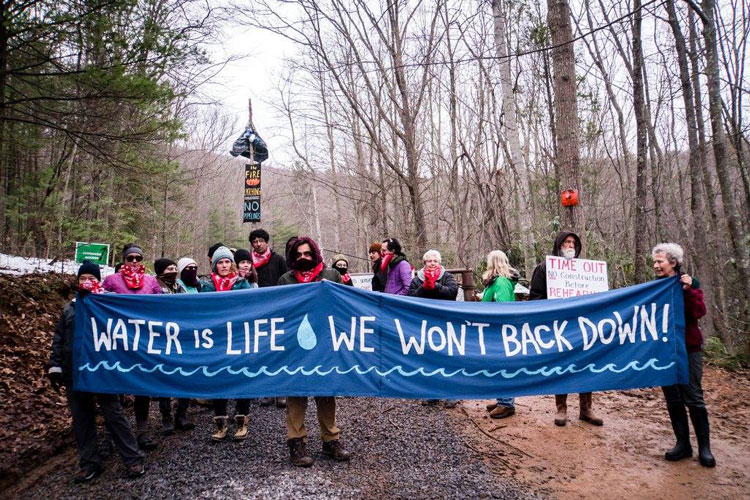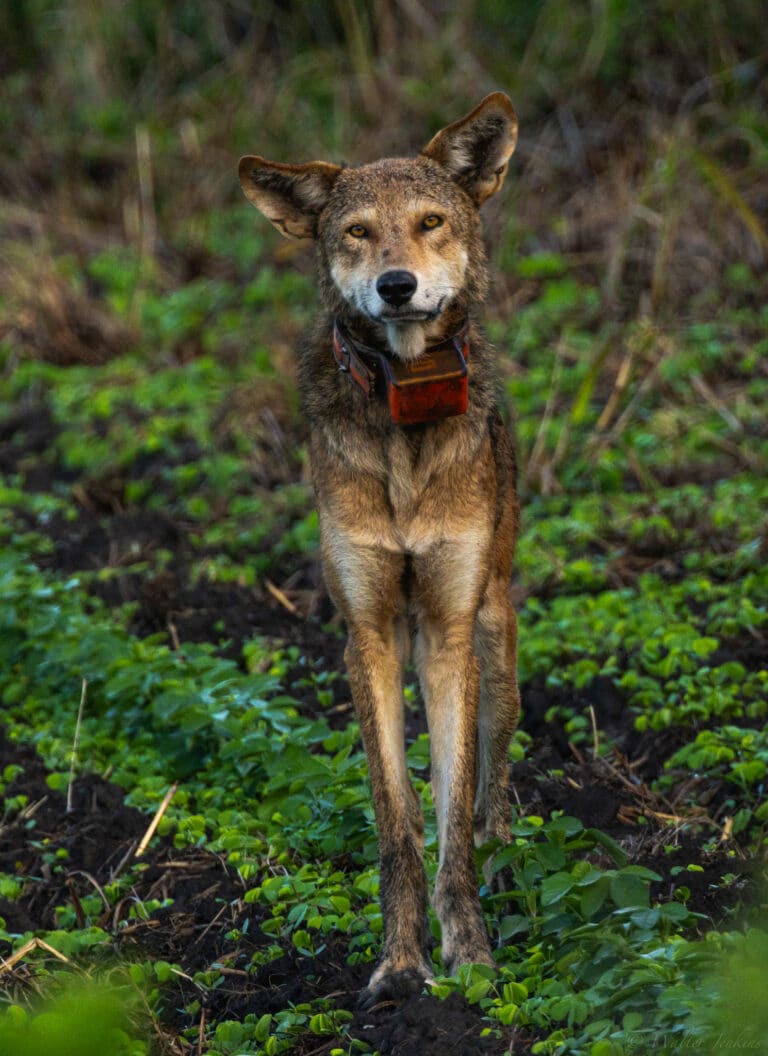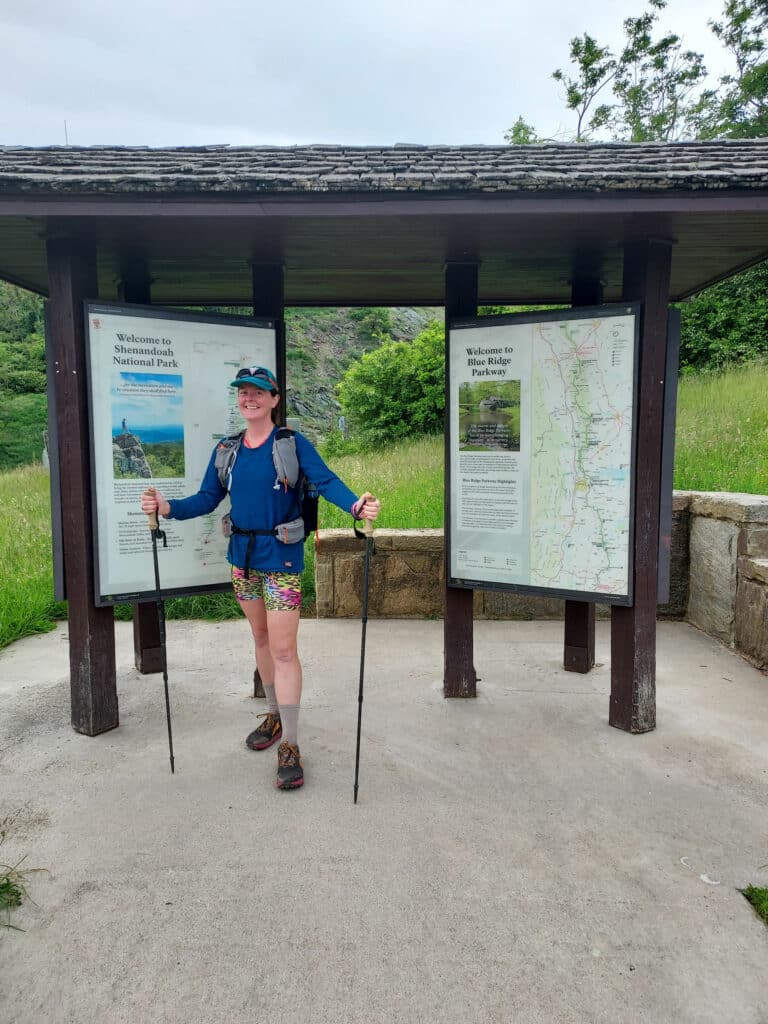214 Days: Tree sitters have blockaded the Mountain Valley Pipeline for seven months. Here’s what motivates them to persist.
It started with the two tree sits blocking the Mountain Valley Pipeline easement in Jefferson National Forest in West Virginia, in close proximity to the Appalachian Trail. These two tree-sits were soon followed by more acts of resistance along the pipeline route, including numerous aerial blockades and people locking down to equipment.
In a video posted by one of those tree sitters over a year ago, the following statement was made:
“When the pipeline spills, when there is an explosion, when people are displaced from their homes, when the air itself becomes a carcinogen, when the seas rise, it’s people’s lives that are at stake. We recognize that most of these repercussions of pipelines, if not all of them, are inevitable. It’s why we are in these trees.
The police’s responsibility is to remove us from these trees– to ensure the inevitability of this pipeline. We see their free-speech zone as a tactical means of expediting this process. So we ask again: safety for whom?
Where does this leave us? Well one thing we know is that a long history of civil disobedience—of intentionally breaking unjust rules and laws—precedes us. Courageous people fighting for a new world has often meant edging up against all that enforces the world as it already exists.”
The Mountain Valley fracked gas pipeline, which would transport gas intended for overseas export, is routed to cross steep mountain terrain prone to seismic activity, landslides, and sinkholes. If completed it would cross over 500 bodies of water, not to mention sensitive wetland areas and some of the largest unfragmented forests left in the eastern U.S. For a region that relies on local water sources for crops and livestock, the imminent threat of losing access to clean water means the loss of many people’s livelihoods in addition to loss of clean drinking water.
Construction of the pipeline has also been delayed through court proceedings. Hundreds of landowners along the pipeline route are fighting the company’s use of eminent domain. Environmental groups like the Sierra Club have also dealt major blows to the pipeline in court cases that lost the MVP its Nationwide 12 permit and its approval to cross public lands.
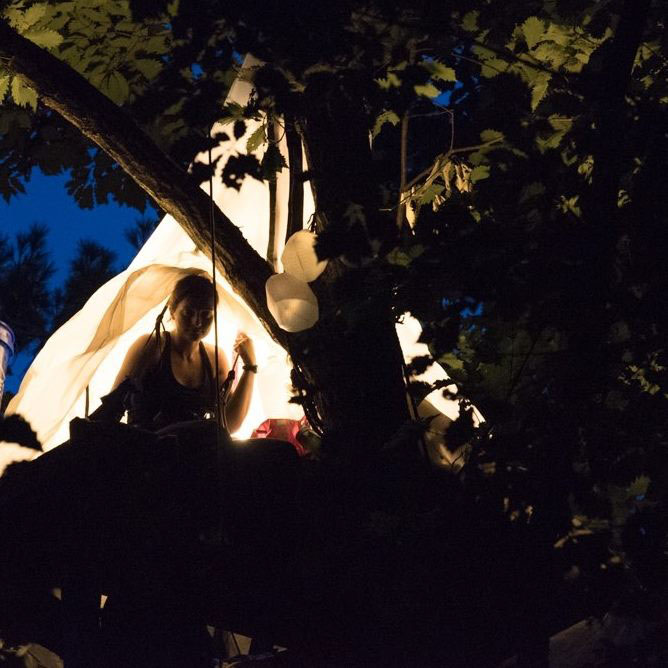
When the Peter’s Mountain tree sits sprang up in Jefferson National Forest last year, it caused a significant shift within local communities. People who had not previously engaged in the fight began to mobilize against the MVP. The fight for Peter’s Mountain inspired more aerial blockades and acts of resistance, like those of Red and Minor Terry. People started showing up at the tree sits with food and other supplies to show their support.
Crystal, a mother and local resident also associated with Roanoke People’s Power Network, says it was a culmination of her own life experiences that led her to activism and that she got involved in the pipeline fight because she believes stealing land for corporate gain is wrong. “The narrative about locals needing the pipeline for lower energy costs and local jobs is all lies,” she states. “From my understanding the gas will mostly be for export and there will hardly be any local jobs.”
In areas along the pipeline route where there seems to be less opposition from locals, people like Crystal have an explanation. She says that she was surprised that more people in her community weren’t resisting, but she believes that people’s hopes of beating a big company were extinguished when locals fought for ten long years against an intermodal rail yard in Eastern Montgomery County, but ultimately lost. This is an all-too-common theme in a region that has long suffered from a history of extraction and exploitation, first by coal mining and now fracked gas and pipelines.
For many along the MVP route, hope was reignited with the Peter’s Mountain sits and all of the direction action that followed. Emily Satterwhite, an associate professor at Virginia Tech, was so motivated by what transpired on Peter’s Mountain that in June of 2018 she locked down to an excavator located on the pipeline easement, successfully blocking construction for 14 hours. She says that the most inspiring thing to her throughout this movement has been the way in which people have shown up for each other again and again. “People say that the system is rigged and that there is no point in trying to fight it,” she states, “but it has been life-changing to witness the number of people willing to fight and to show up for their communities over and over again. I’ve heard a social movements historian say that before Peter’s Mountain there wasn’t really a culture of resistance here in Montgomery County, but that the Peter’s Mountain tree sitters changed everything.”
She says that climate change and recognizing who suffers the most as a result of it are the main things that motivated her to get involved. “The fact that there is something that I can do in my own county to significantly reduce climate emissions and to confront power and make a difference on a global scale… I can’t not become involved. For me, this is about fighting corruption and fighting industries’ capture of government.”
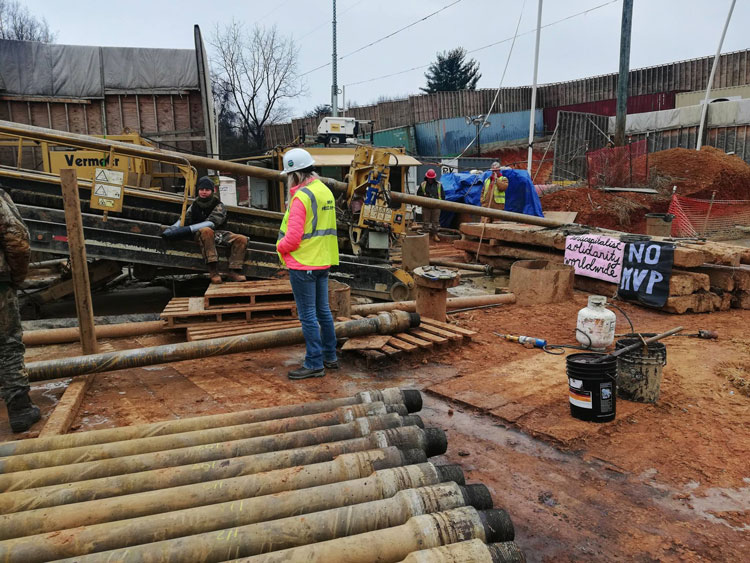
As of right now pipeline construction is approximately 30% complete in the state of Virginia. The MVP project is over a year behind schedule and more than a billion dollars over budget. Amidst falling stock prices and the loss of two key permits, pipeline officials have issued statements admitting that the pipeline project may never be finished. Forbes Magazine recently observed that both MVP and the Atlantic Coast Pipeline project “are now in peril.”
Since the Peter’s Mountain tree sits, there have been a total of 11 aerial blockades along the pipeline route, with the Yellow Finch tree-sits in Montgomery County being the most recent and currently the longest on-going blockade against the MVP to date. This aerial blockade recently surpassed 200 days of blocking construction. In a court statement, MVP claimed that if the tree sitters weren’t off of the hillside by the end of March then it will have cost them approximately $300,000.
My own motivation to join the growing pipeline resistance has evolved over time. This past fall, I occupied one of the tree sits at Yellow Finch for 38 days. After I vacated the platform, a person named Phillip Flagg took my place in the tree to continue the blockade. My initial reasons for getting involved started because I felt that I couldn’t ignore what was happening to people in my own community. If there was something that I could do in my own backyard to combat the growing crisis of corporate greed and destruction then I felt compelled to act. However, over the past year I have realized that this struggle is much bigger than fighting a single fossil fuel pipeline.
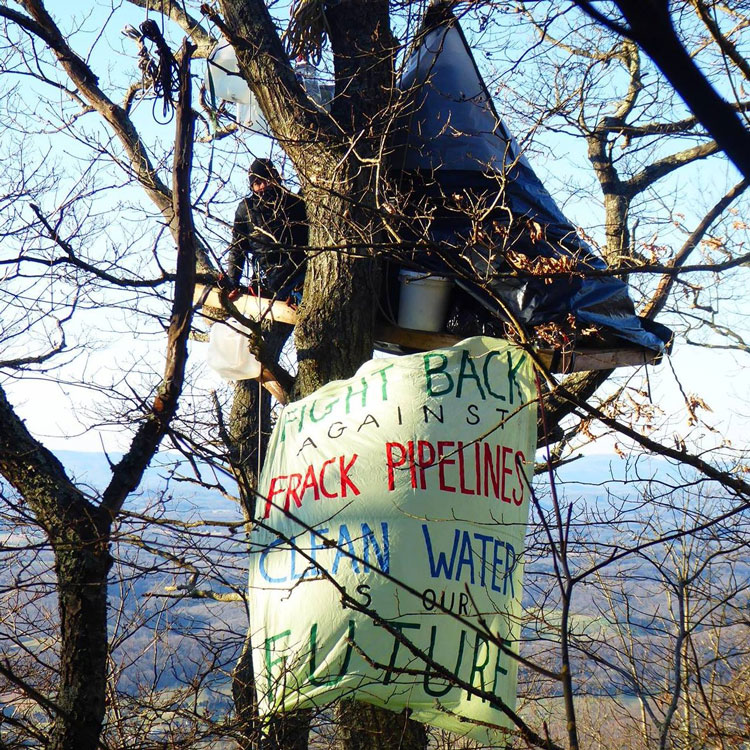
Directly beneath the wooden platforms of the tree sits at Yellow Finch and all around the hillside beneath them, there are banners bearing messages that link the pipeline fight to other issues with messages such as “No prisons, no pipelines” and “No pipelines on stolen indigenous land.” Although media coverage has rarely covered such motivations, opposing the pipeline is just one part of a much larger struggle to end state violence in all forms. Many of the people camping out at the tree
The fundamental concept of anarchy is the rejection of anything hierarchical, but it is not chaos or disorder as many have been led to believe. As Phillip puts it, “It’s not a lack of organization. If anything there has to be more organization, otherwise it wouldn’t work. There’s more communication involved because there has to be. A broader spectrum of opinions are being heard. It’s not just one person telling others what to do.”
Phillip explains that, “anarchism is as much a sensibility and feeling as it is an ideology.” His start in activism began with the year he spent campaigning for Bernie Sanders in the 2016 presidential election. Over time he became disheartened by electoral activism and began showing up at action camps where people were protesting other pipelines around the country. Phillip goes on to say that he doesn’t view living in a tree as a sacrifice. He tried normal society life and he didn’t enjoy it. “People have an inherent desire to do meaningful and creative things with their lives and those desires are not satisfied by capitalism,” he says. “Any type of hierarchy or domination is dissatisfying, whether that’s humans dominating other humans or humans dominating the environment.”
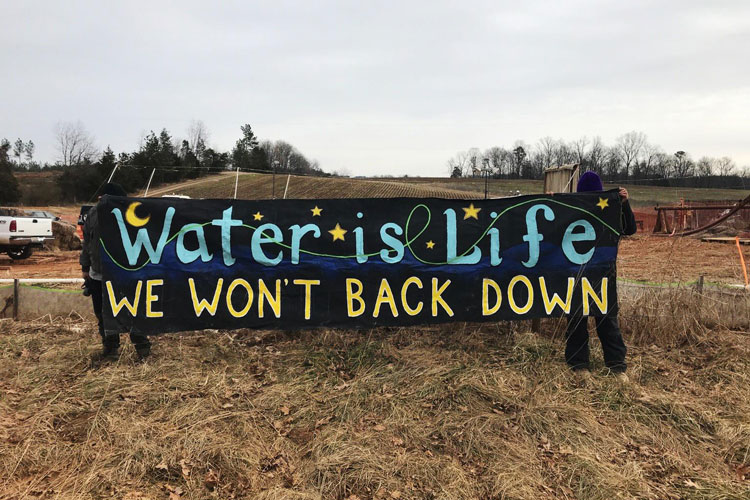
For many people, anarchism is not just a socio-political ideology. “It’s about building community, people helping other people, and caring for one another. It’s also about autonomy and being self reliant,” an anonymous camper explains. It’s easier to do these things outside of the confines of the state, without the weight of bureaucracy preventing or discouraging people from helping others or doing things on their own (for example, being prevented from donating food or providing mutual aid due to permitting requirements or liability issues).
A Lord-of-the-Rings-inspired essay written by Phillip this past February addresses this philosophy and more:
“What bad things do you seek to thwart by seizing state power? If you’re concerned with people going hungry, go feed them. If you’re concerned with people not having health care, organize a clinic. In short, practice mutual aid. At the same time, don’t be deceived that this is enough. Directly confront systems of power and stop them from working. Blockade weapons plants, lock down to ICE vans, and yes, set up tree sits.
The Black Panthers understood this. Catholic Workers understand this. Naturally, any anarchist worth their salt does as well. People are suffering today. Any answer to that suffering that starts with “well in 2 years maybe Bernie will be president…” is at its core a waste of time. This pipeline will be completed by then. And how many Yemeni and Palestinian people (to pick merely two cases) will have died by then?
It seems to me that the only humane answer is to work immediately to relieve people’s suffering. At the same time, the source of their suffering – capitalism and the state – must be vigorously and ceaselessly confronted.”
The area around the tree sits has become a community space of sorts where people camp out on the hillside and where people from the local community frequently visit and bring supplies. People support the tree sitters in any way that they can.
A lot of time at camp is spent maintaining the space by doing chores such as chopping firewood or cooking food for the the tree sitters, but a lot of the time is also spent reading, writing, and having engaging conversations with others around a campfire. The culture around camp also encourages people to learn new skills and to become more self sufficient. Campers either already know or learn tools for self-reliance such as building a fire, operating power tools, or working on their own vehicles.
People go to the camp to support direct action against the pipeline, but they have simultaneously created a community where people take care of each other and share knowledge and resources with each other. Not everyone identifies as an anarchist, but the fight against the pipeline has brought people together and allowed people to learn and grow from each other’s experiences. It has brought together people of many different backgrounds and beliefs, but most people agree that systemic changes urgently need to be made. The rule of law that we are currently living under is not just or fair when people are being harmed by pipelines, fracked gas, or unclean water. It is not enough to fight within the confines of this broken system. If not for the efforts of both direct action and battles won in court, this pipeline likely would have been completed by now.
A related note from the tree sitter in the White Pine says this:
“We are living in these trees because the accepted avenues of action within the system present zero chance of stopping this pipeline. If the Democratic Party would adequately confront the climate crisis, I would just come down and vote. Unfortunately, the Democratic Party is a facade; presenting a myth of opposition to this regime while existing in conspiratorial conjunction with the Republicans. Red team, blue team, it’s all one regime: the capitalist regime. “Let this radicalize you rather than lead you to despair.” These words (credit: twitter.com/prisonculture/status/890778726140706818) become more and more applicable as we see this disastrous economic system destroy itself, taking all that we love with it.”
Many long-time residents strongly support direct action against the pipeline and feel grateful for the community that has evolved around the support camp. Emily Satterwhite expresses gratitude for the chance to learn and to come to a better understanding of what anarchism is by being a part of this movement. She is still politically active and says, “For me, I just can’t not try to hold the system accountable. For as long as they hold power over people I have to at least try,” but she is grateful to those who have shown her that it is possible to live outside of the normative constraints of working jobs and capitalism. “That people can choose not to opt in is a revelation to me,” she says. She also states that she has learned from anarchists to recognize colonialism as something to consider and analyze on a daily basis and not just every once in a while in a classroom.
Crystal says that she sleeps better at night knowing they are close by protecting the trees on Yellow Finch. “I try to be as active as possible while balancing being self employed and a single mom,” she says. “There’s never enough hours.” She goes on to say that she has found hope in the way that she has seen people show solidarity for each other. “During this fight I have found that the anarchists are seen as the enemy, but they will fight for the oppressed more than any Republican, Democrat, or liberal,” she says. As someone who has witnessed and experienced injustice throughout her life, she expresses, “things aren’t getting better and we need more people to get involved and be vocal about it.”
An anonymous individual camping at Yellow Finch reflects about how much growth there has been within the community through the resistance to the pipeline: “Look at what has happened because of the tree sits. People who never would have met each other have now met and are taking care of each other. There’s a more established community here than before and there will be long after this blockade is gone.” What has had the biggest impact in this struggle against the pipeline hasn’t been any one individual and certainly not any lawmakers or elected officials. It has been ordinary people taking care of each other, connecting with each other, improvising strategies, and coming up with solutions together.
This will not be the last pipeline ever attempted to be built. Nor will it be the last time the fossil fuel industry tries to take from the land the resources we need to live. Regardless of whether this pipeline gets built or not, the community that has developed around the tree sits will continue to carve a path for future generations.
